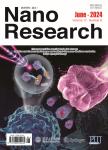The critical factors of photocatalytic H2 production from seawater by using TiO_(2)as photocatalyst
作者机构:Beijing Key Laboratory for Green Catalysis and SeparationCenter of Excellence for Environmental Safety and Biological EffectsFaculty of Environment and LifeBeijing University of TechnologyBeijing 100124China
出 版 物:《Nano Research》 (纳米研究(英文版))
年 卷 期:2023年第16卷第4期
页 面:4620-4624页
核心收录:
学科分类:07[理学] 081705[工学-工业催化] 070304[理学-物理化学(含∶化学物理)] 08[工学] 0817[工学-化学工程与技术] 0805[工学-材料科学与工程(可授工学、理学学位)] 0703[理学-化学]
基 金:supported by the National Natural Science Foundation of China(Nos.21872001,22272003,21805004,and 51801006) the Beijing Municipal High-Level Innovative Team Building Program(No.IDHT 20180504) Beijing Outstanding Young Scientists Program(No.BJJWZYJH0201910005017) Beijing Natural Science Foundation(Nos.KZ201710005002 and 2192005) Beijing Municipal Science and Natural Science Fund Project(No.KM201910005016) these funding agencies are acknowledged.
主 题:seawater H_(2)production rate adsorb ions pH
摘 要:The solar H_(2)generation directly from natural seawater is a sustainable way of green energy.However,it is limited by a low H_(2)generation rate even compared to fresh water.In this report,TiO_(2)is chosen as a model photocatalyst to disclose the critical factor to deteriorate the H_(2)generation rate from seawater.The simulated seawater(SSW),which is composed of eight ions(Na^(+),K^(+),Ca^(2+),Mg^(2+),Cl^(−),Br^(−),SO_(4)^(2−),and CO_(3)^(2−)),is investigated the effect of each ion on the H_(2)production.The results indicate that all ions have a negative effect at the same concentration as in the seawater except Br−.The CO_(3)^(2−)has the most serious deterioration,and the H_(2)production rate lowers near 40%even at[CO_(3)^(2−)]of 1.5 mmol·L^(−1).The H_(2)production rate can be recovered to 85%if the CO_(3)^(2−)is excluded from the SSW.To understand the reason,the zeta potential of the TiO_(2)treated with different ions aqueous solution reveals that the zeta potential decreases when it is treated with CO_(3)^(2−)and SO_(4)^(2−)due to they can adsorb on the surface of TiO_(2)nanoparticles.Fourier transform infrared(FTIR)and thermogravimetric analysis-mass spectroscopy(TGA-MS)further confirm that the adsorbed ion is mainly from CO_(3)^(2−).Since the pH of seawater is about 8.9 between pKa1(6.37)and pKa2(10.3)of H_(2)CO3,the CO_(3)^(2−)should exist in the form of HCO3−in the seawater.We proposed a simple method to remove the adsorbed HCO3−from the TiO_(2)surface by adjusting the pH below the pKa1.The results indicate that if a trace amount of HCl(adjusting pH~6.0)is added to the SSW,the H_(2)production rate can be recovered to 85%of that in pure water.



